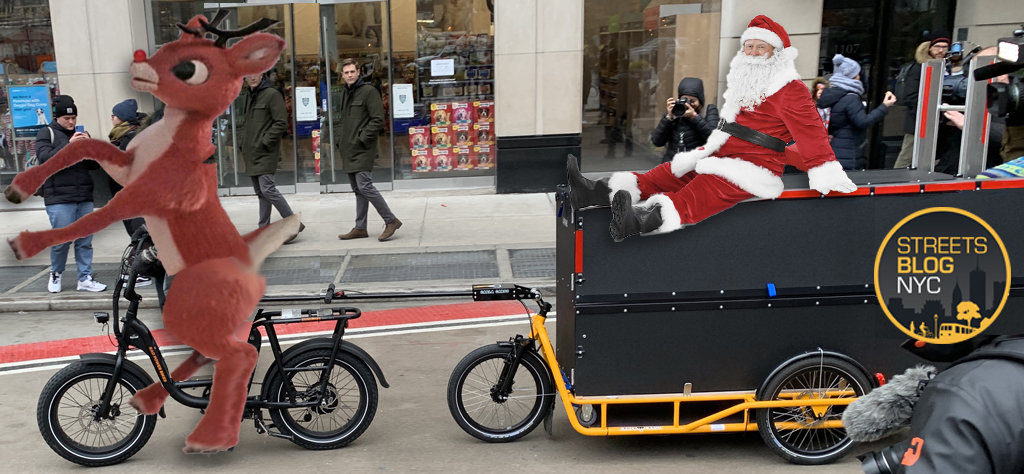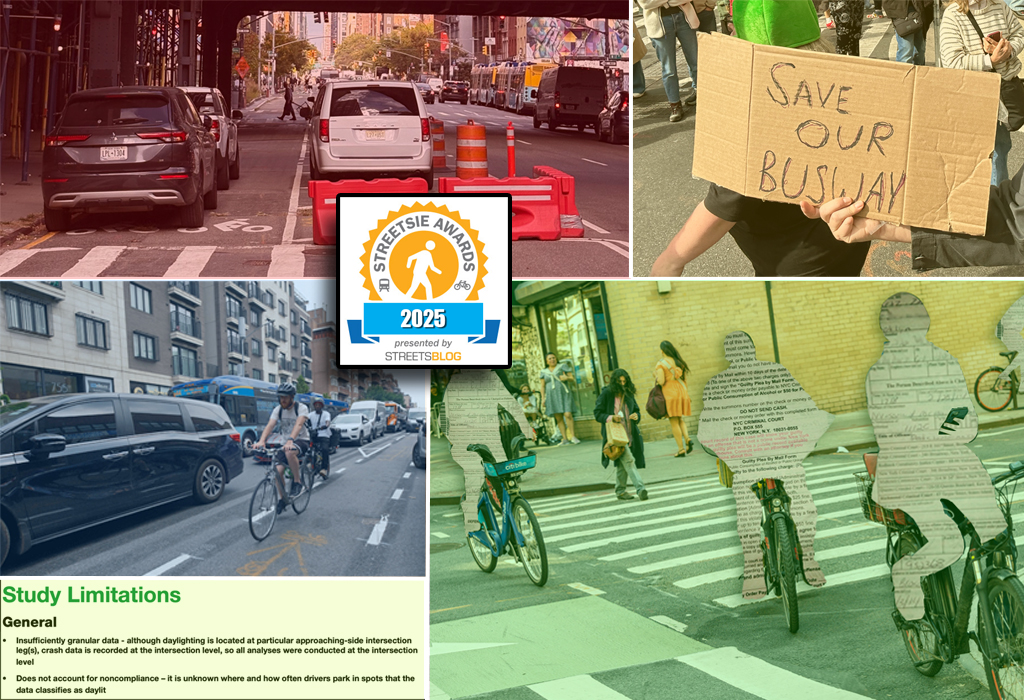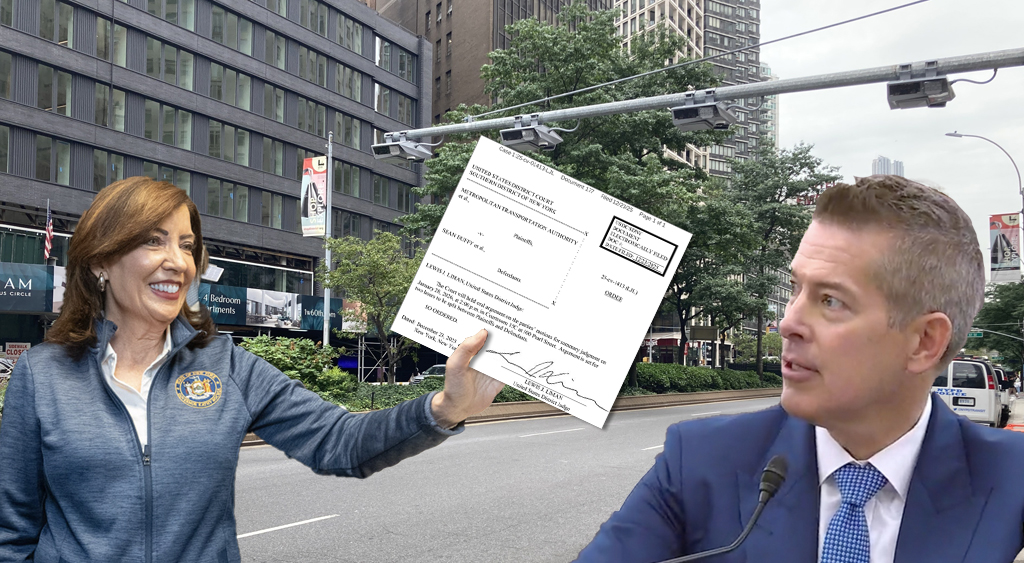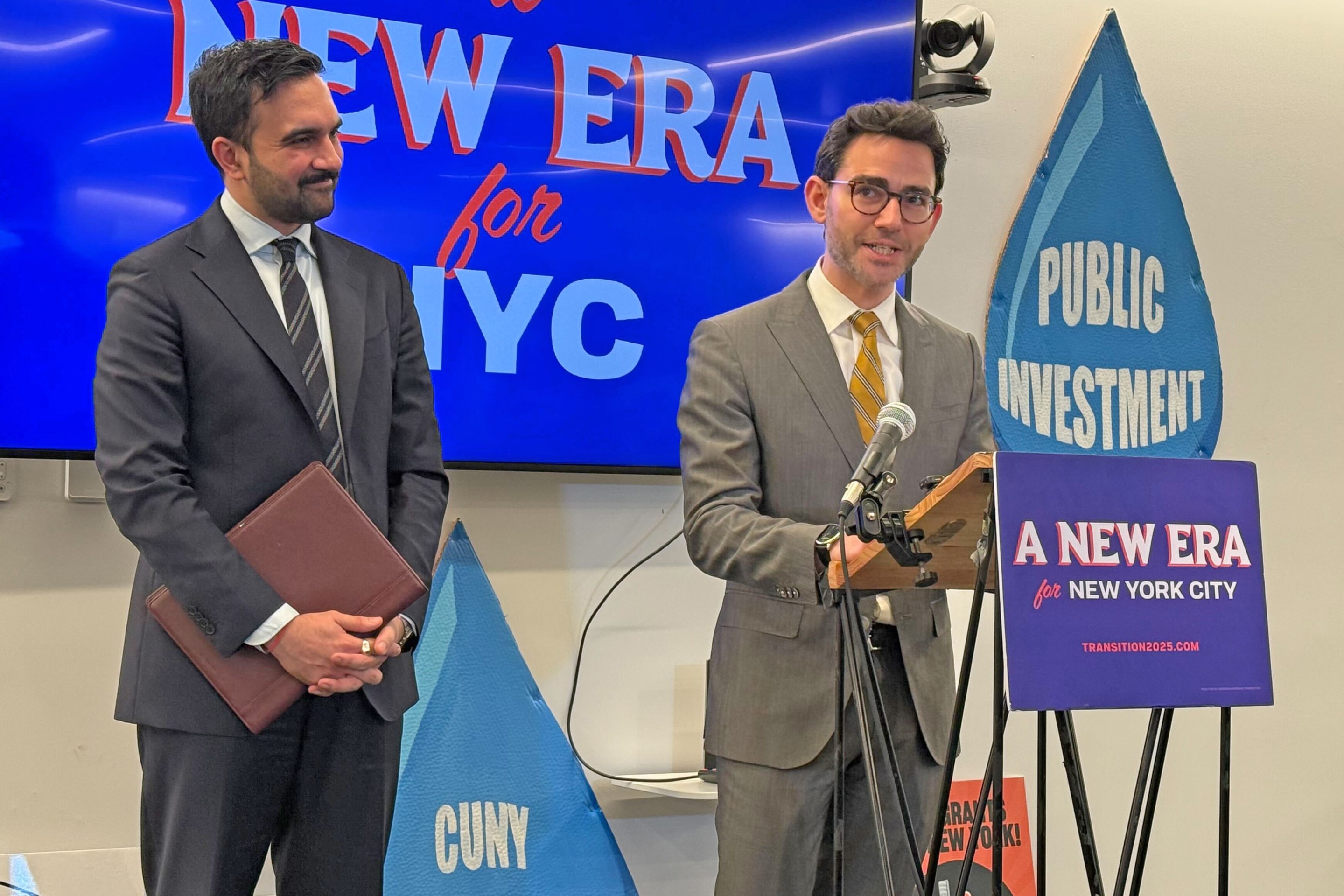Ford's Chariot van service — which has been hyped as a key addition to the urban transit network, but is little more than $4 bus rides along set routes in areas already well served by existing service — is proving to be a big, expensive failure.
Chariot's chariots are mostly empty most of the time, according to data provided by the company and crunched by transit analyst Eric Goldwyn.
Even on its best-performing weeks, Chariot's fleet of 25 or so vans only serves around 1,000 riders total, or about nine riders per vehicle per day. The overall average is much lower — just five riders per vehicle per day. The service has routes, including a Greenpoint-DUMBO run and a Williamsburg-Midtown route.
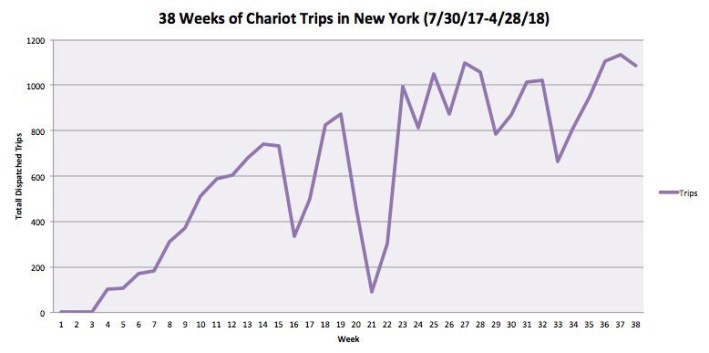
The ridership pales in comparison to the "dollar" vans that travel up and down Flatbush Avenue and other under-served parts of the city. On an average day, a single dollar van will carry between 125 and 150 trips, said Goldwyn, who studied the vans as a doctoral student at Columbia University last year.
The Chariot data supports real-life experience: In May, TransitCenter's Joelle Ballam-Schwan tested the service for a seminal blog post. On her first trip, Ballam-Schwan rode alone from Greenpoint to the Financial District. The second trip fared a bit better — she was joined by one other passenger.
Despite the numbers, a spokesperson for Chariot said the company has "been pleased with the ridership ... to date." The company is now focused on building "enterprise" routes for private businesses and organizations, the spokesperson said, referring Streetsblog to a blog post articulating as much.
Two of these routes are already operating for residents of luxury buildings in New York: One, along 42nd Street, serves the Oskar high-rise at 42nd Street and 11th Avenue. The second carries residents of the Durst Organization's Hallets Point high-rises in Astoria to subway connections in Long Island City.
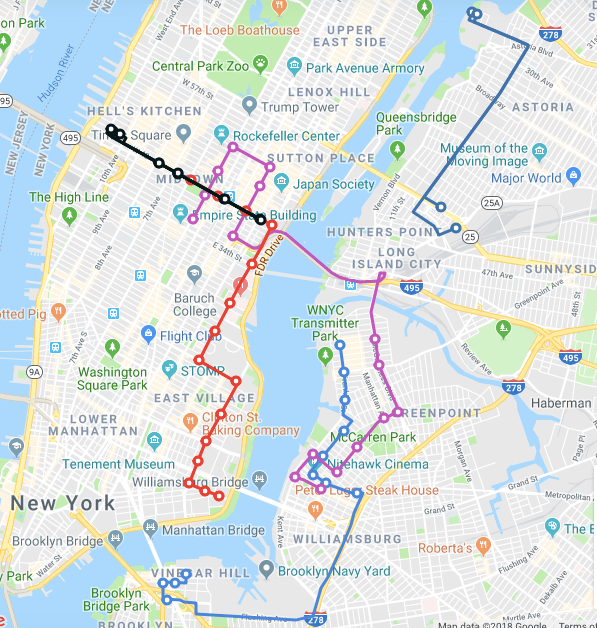
It is unclear what Ford is doing with Chariot, which it bought for $65 million in 2016, based partly on its wider appeal in San Francisco. In New York, Chariot appeared to be positioning itself as a transit alternative during next year's L train shutdown. But the shift to serving luxury apartment residents in transit deserts suggests the company has given up on its commuter-based approach.
Chariot's souped-up dollar vans are being billed as "micro-transit." Given the negligible ridership in New York City, the moniker fits.

